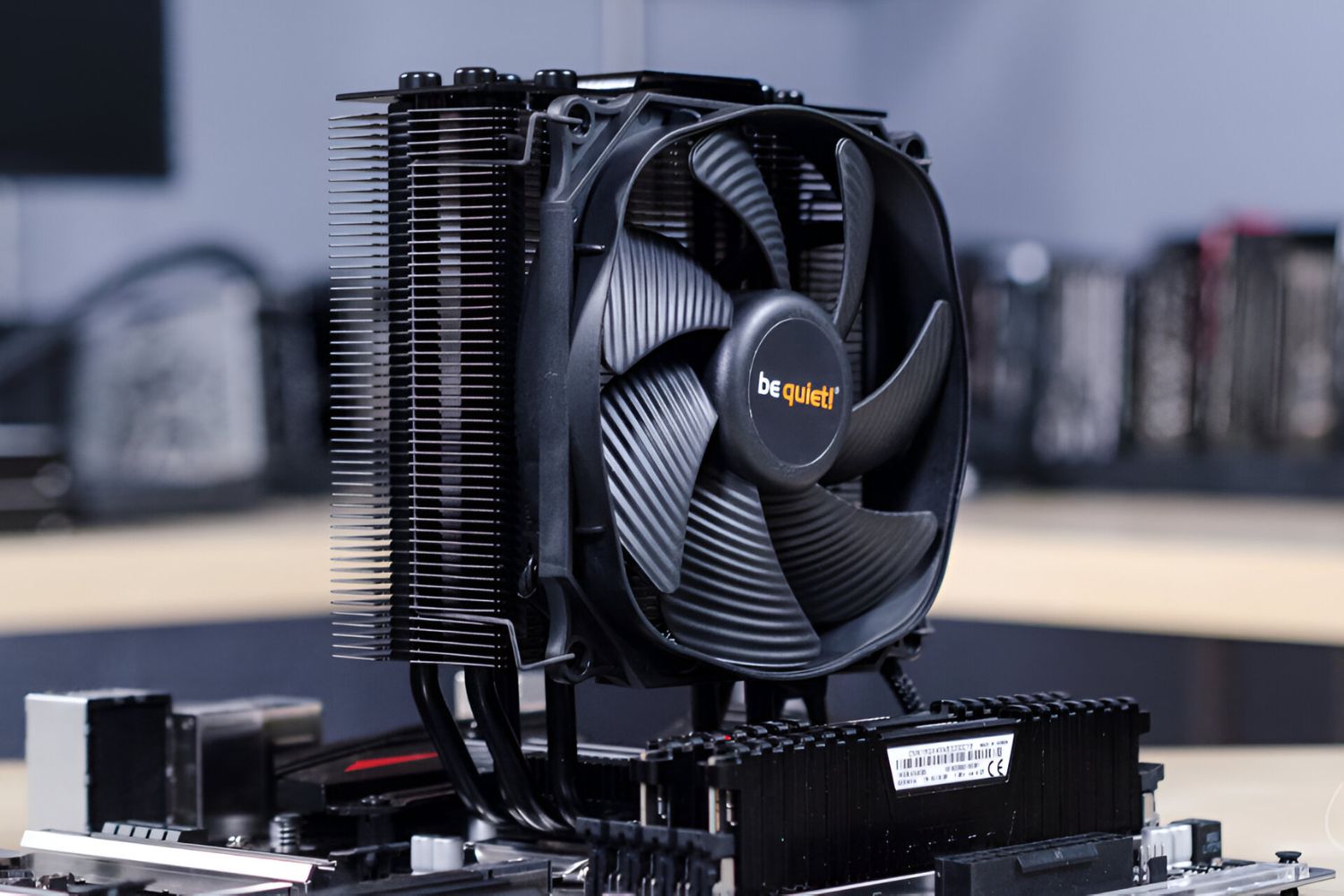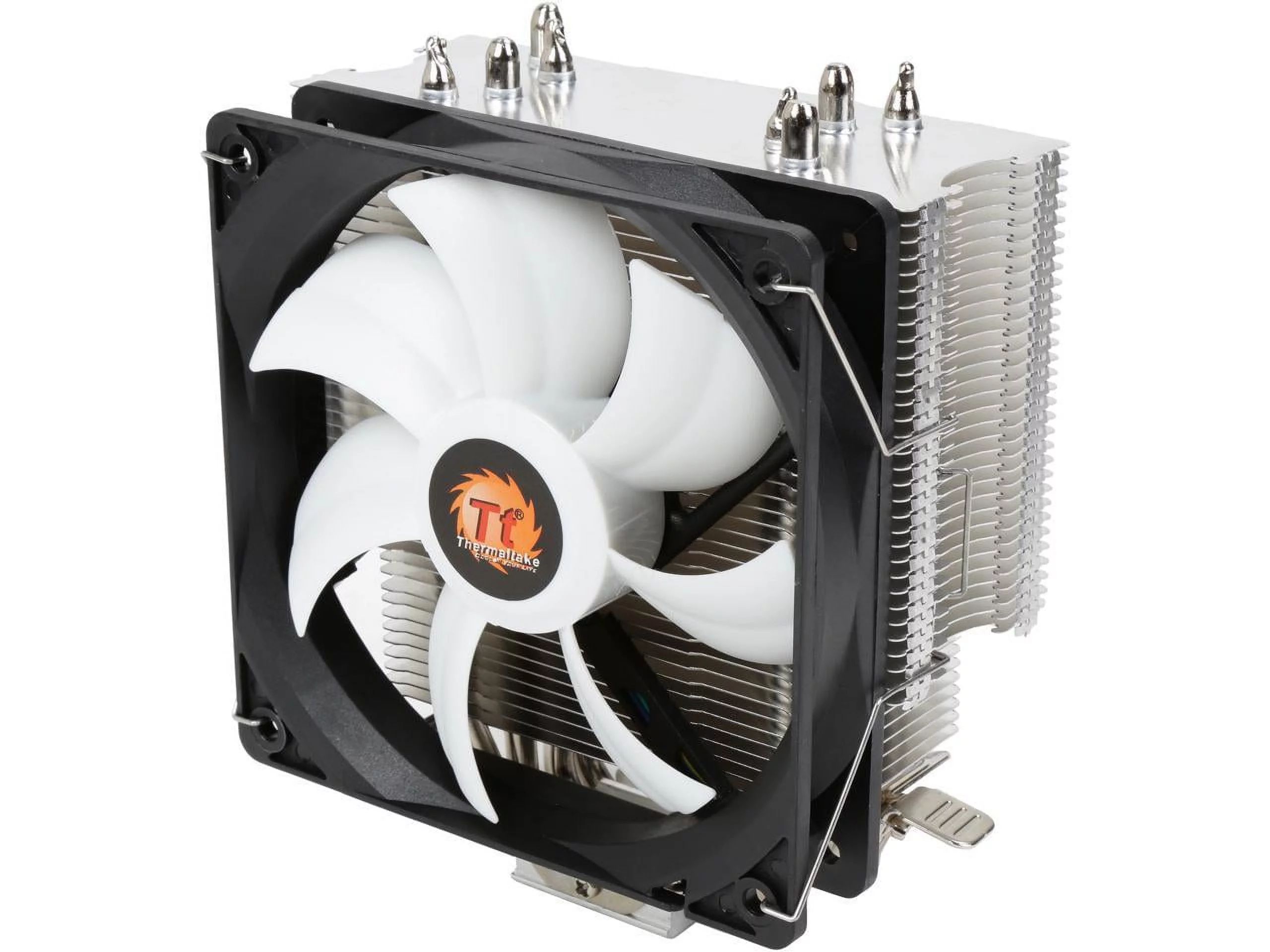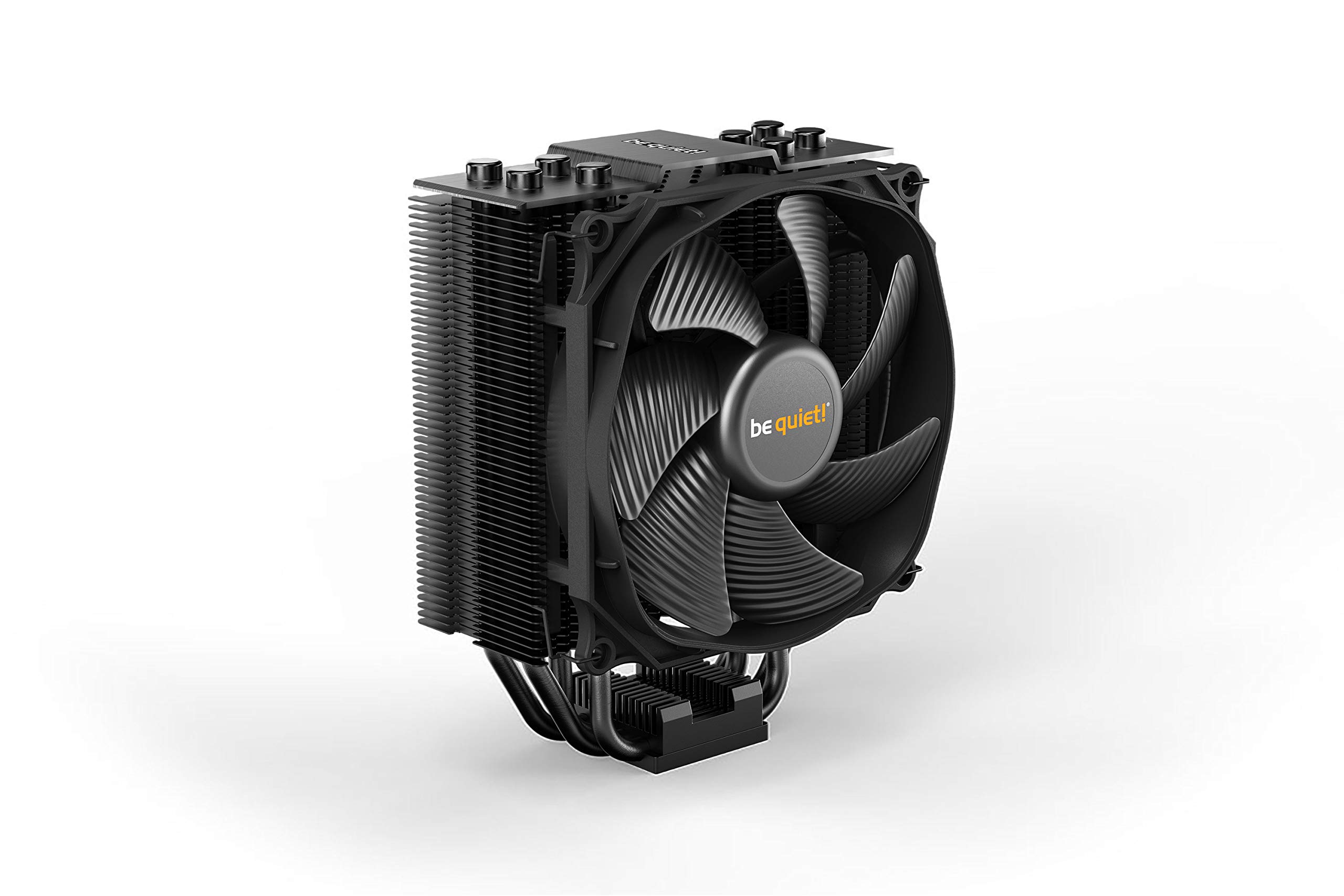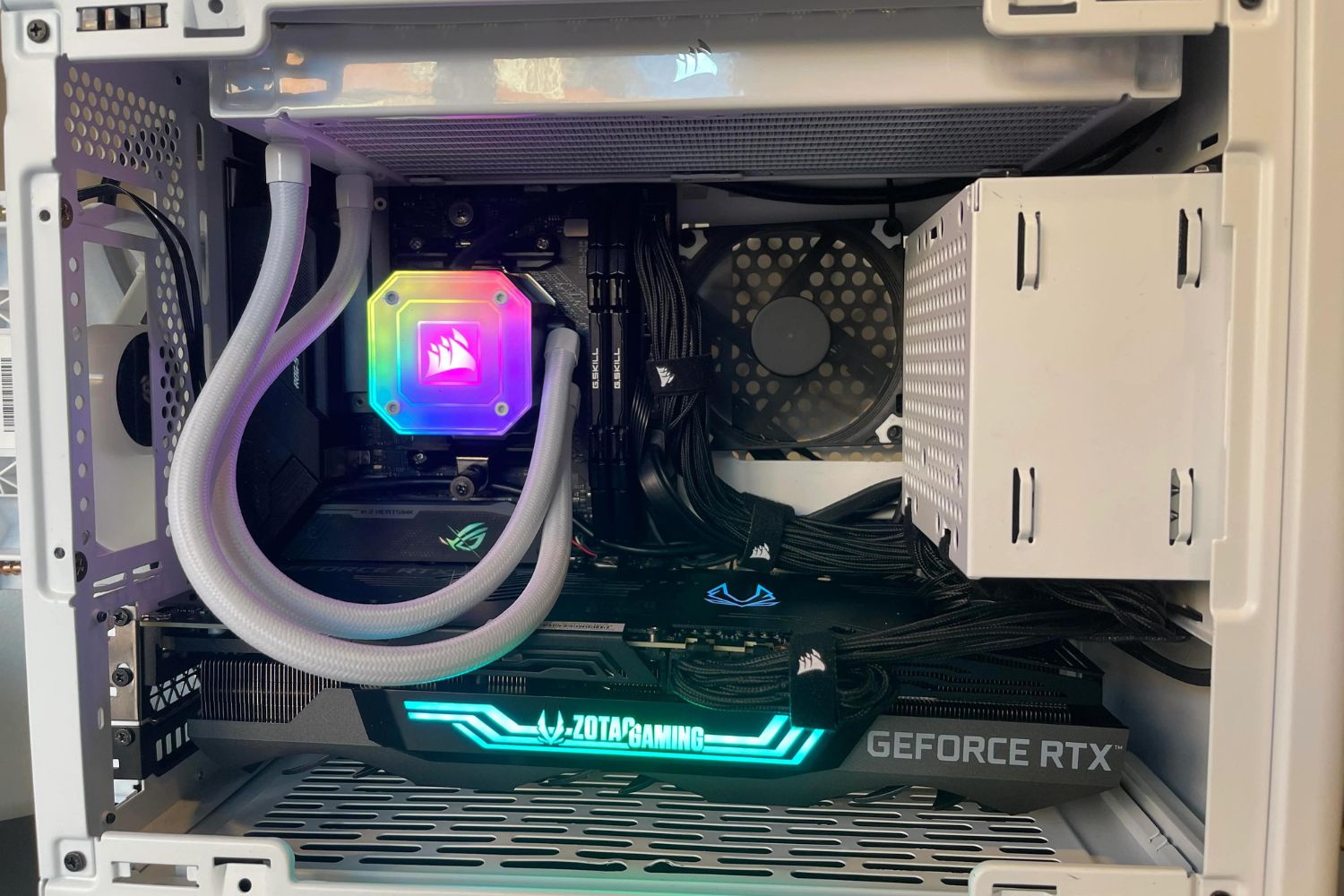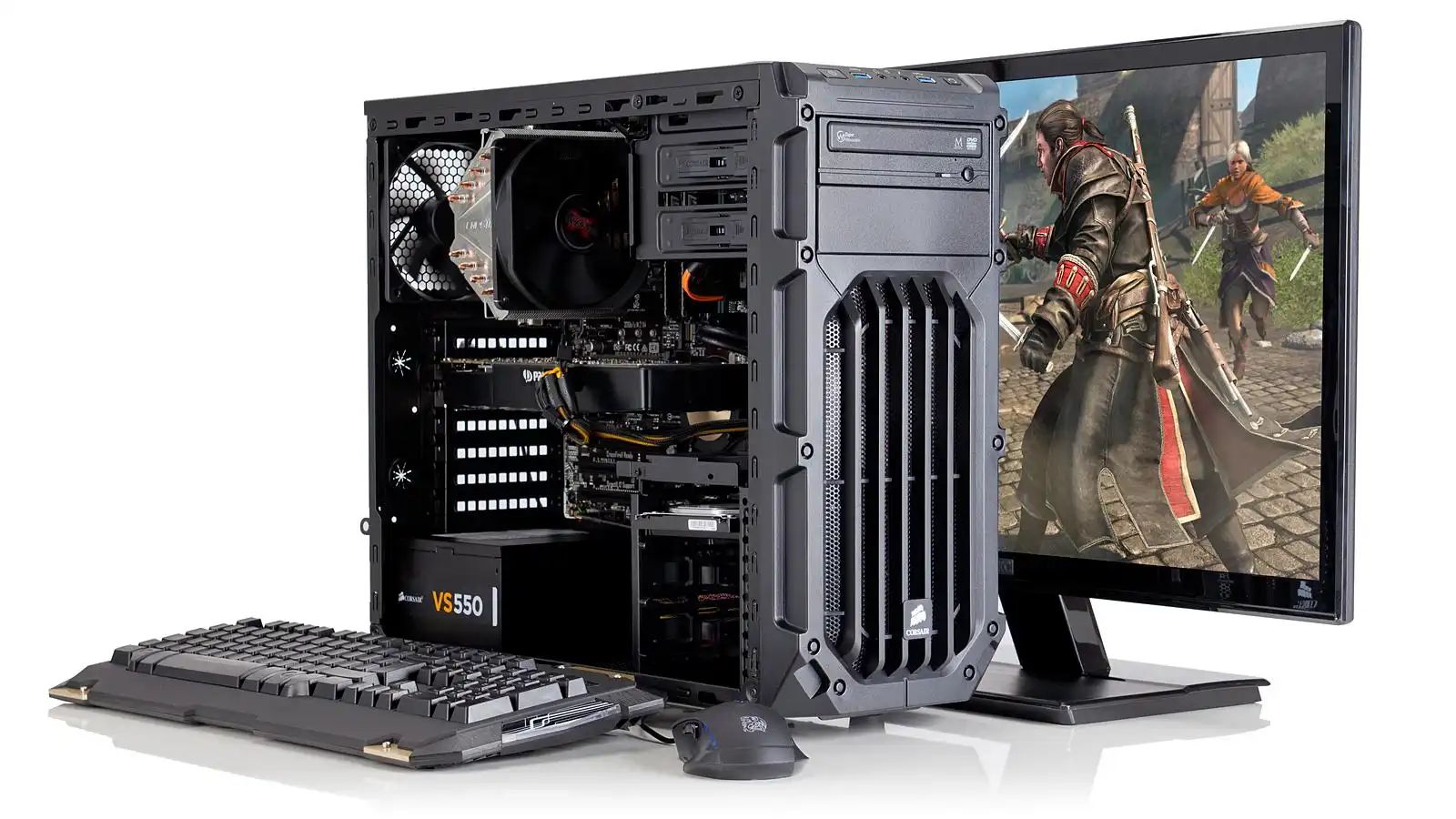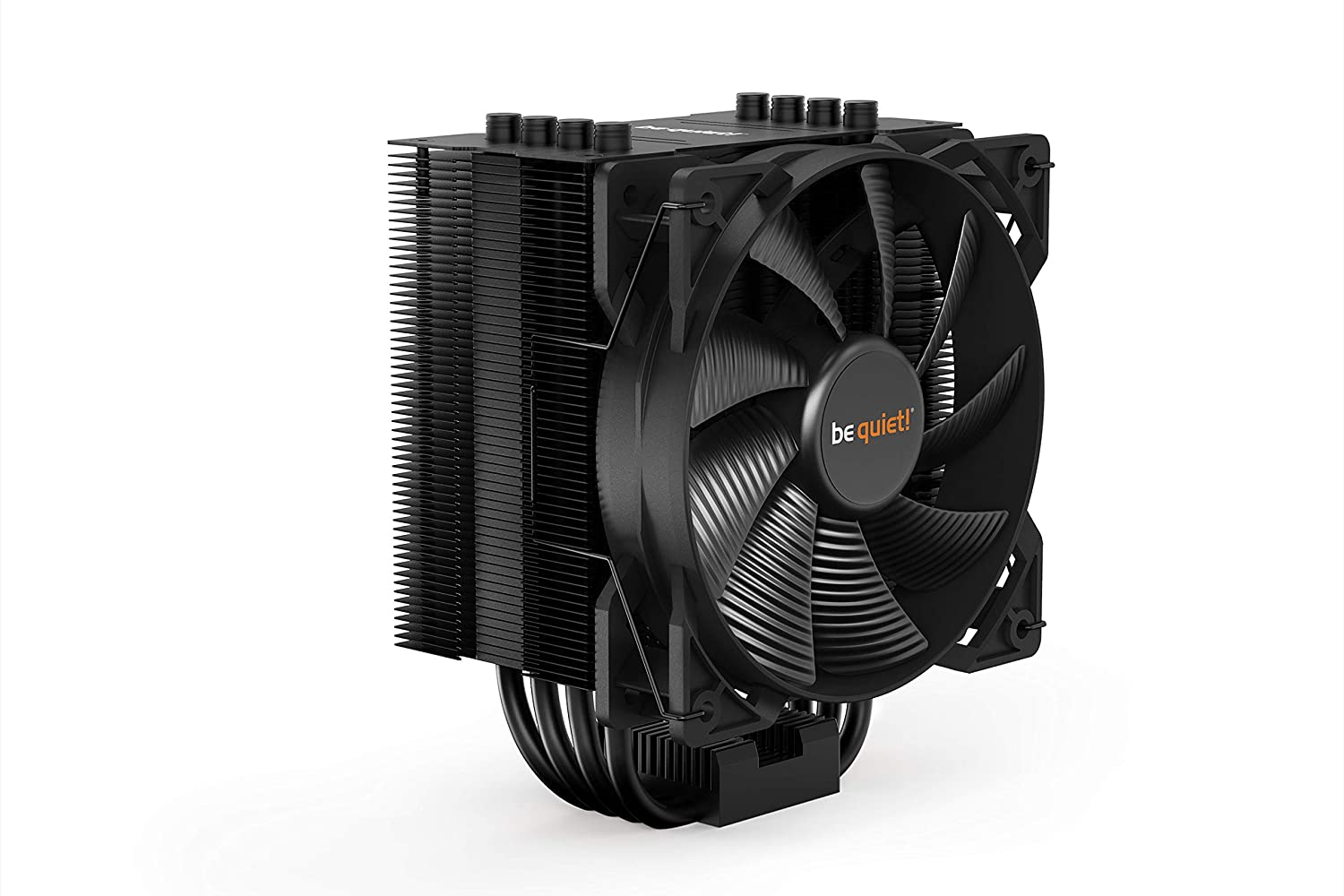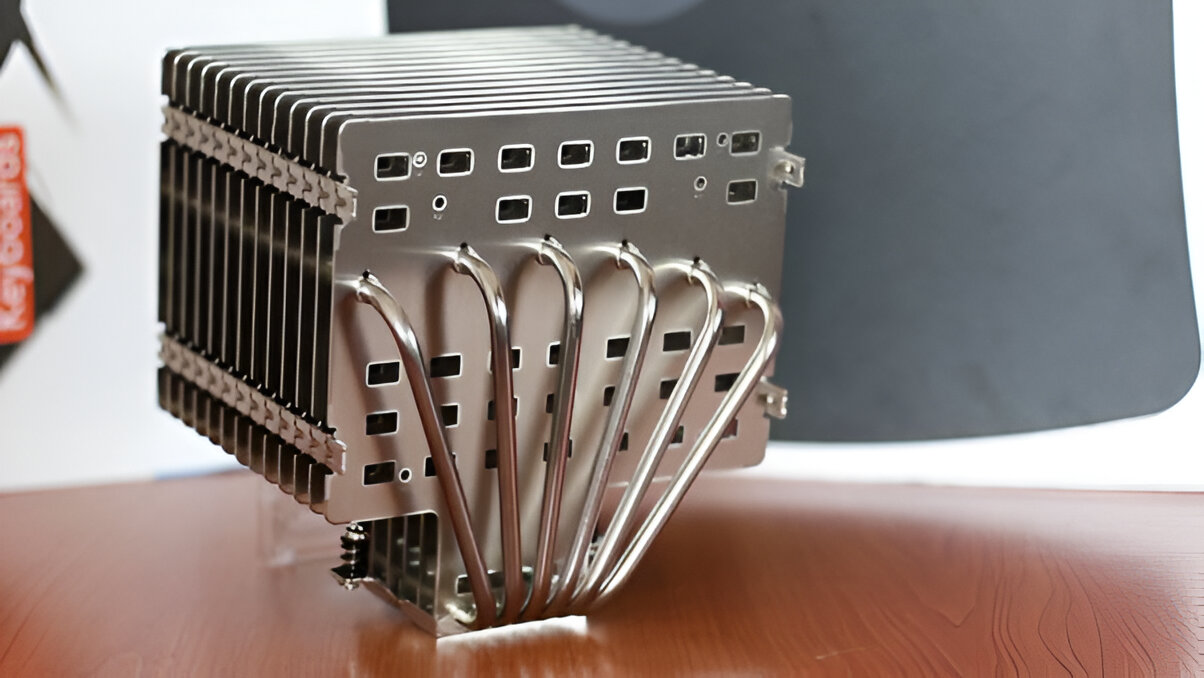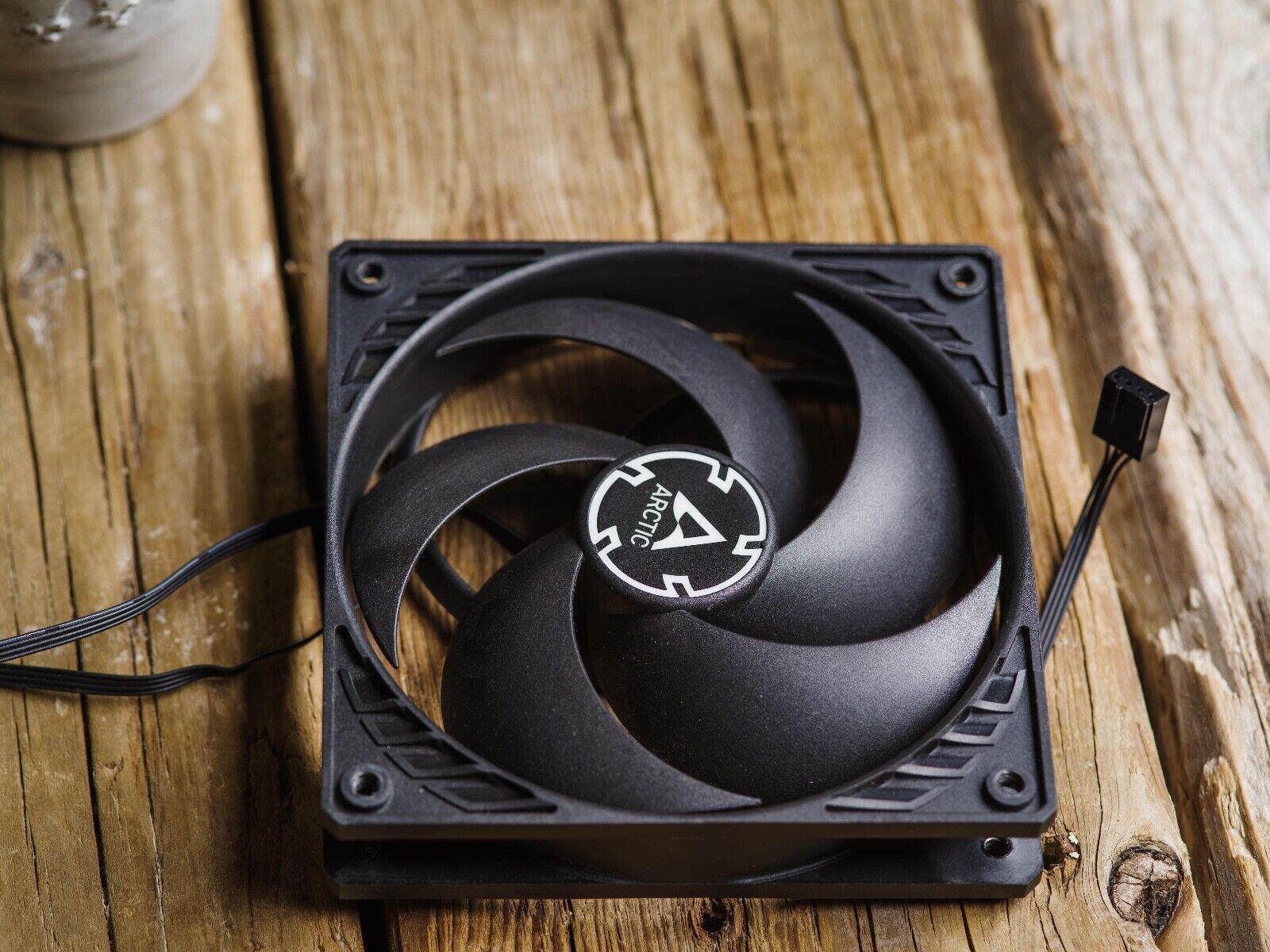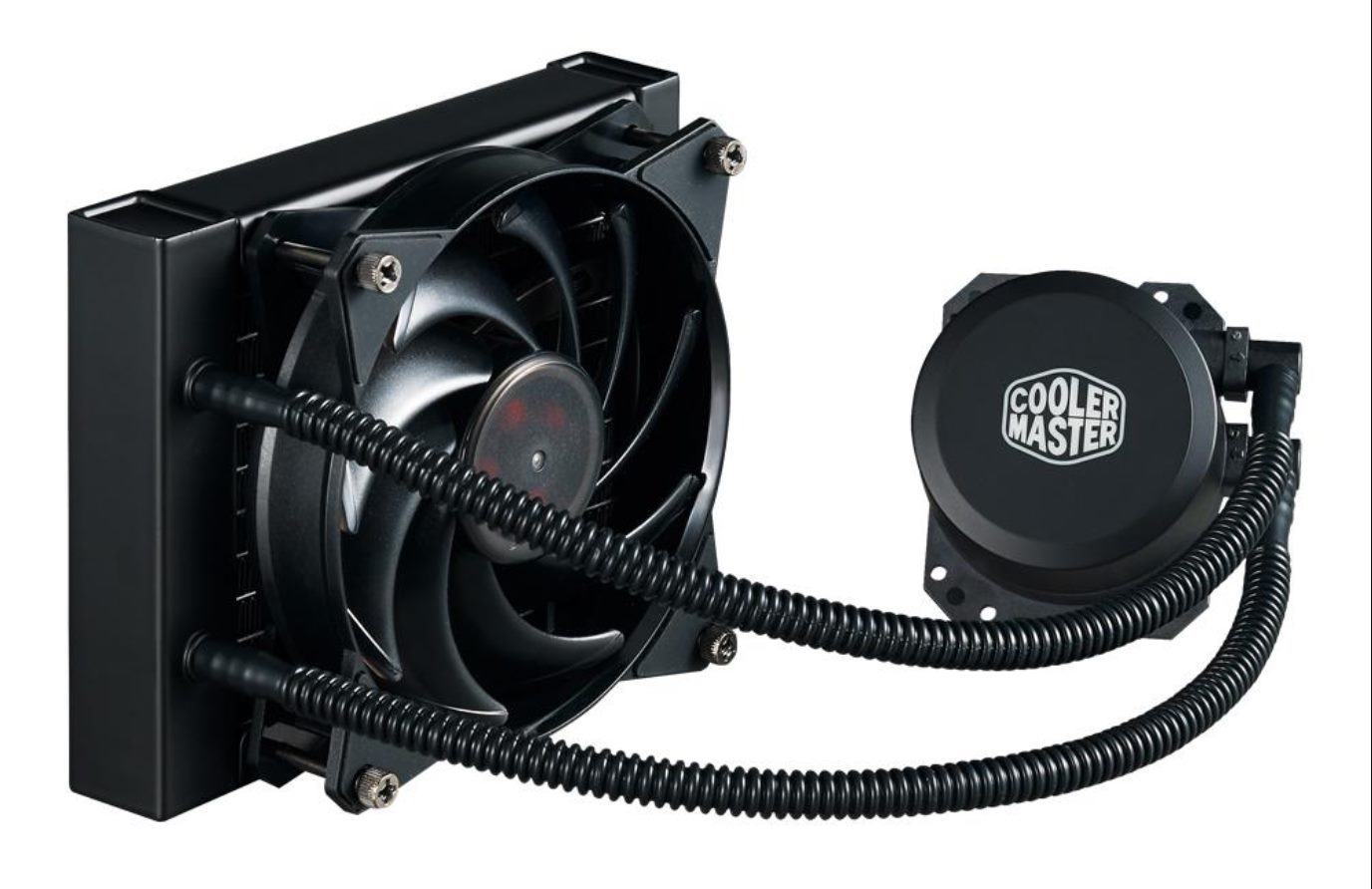Introduction
When it comes to maintaining a quiet and peaceful working environment, one of the most annoying disturbances can be the noise emitted by your CPU cooler. The constant hum or whirring sound can be distracting, making it difficult to focus on important tasks or enjoy your favorite activities on your computer.
The good news is that there are several effective ways to silence your CPU cooler and create a more pleasant computing experience. In this article, we will explore various methods and techniques that you can implement to reduce or eliminate the noise generated by your CPU cooler.
Before delving into the solutions, let’s understand why it is important to address the noise issue associated with your CPU cooler.
Firstly, a noisy CPU cooler can be a significant source of annoyance. The constant noise can disrupt concentration, especially during demanding tasks that require focus and mental clarity.
In addition to the annoyance factor, excessive noise from your CPU cooler can also be an indication of a problem. If your CPU cooler is emitting loud noises, it could be a sign of improper functioning or accumulated dust and debris. Ignoring these issues can lead to overheating, reduced performance, and even permanent damage to your CPU.
Addressing the noise problem not only improves your overall computing experience but also helps in ensuring the longevity and optimal functioning of your CPU. Now that we understand the importance of dealing with a noisy CPU cooler, let’s explore the steps you can take to silence it effectively.
Why Do You Need to Silence Your CPU Cooler?
There are several compelling reasons why you should prioritize silencing your CPU cooler. Let’s discuss a few key reasons:
1. Reduced Noise Level: The primary reason to silence your CPU cooler is to create a quieter computing environment. The constant noise can be highly distracting, making it difficult to concentrate on your work or enjoy multimedia activities. By minimizing the noise level, you can create a more peaceful and enjoyable computing experience.
2. Improved Focus and Productivity: Excessive noise can have a significant impact on your ability to focus and be productive. Whether you’re working on an important project or engaging in intense gaming sessions, a quiet and distraction-free environment can enhance your focus and boost your performance.
3. Longevity of Components: A noisy CPU cooler can be a symptom of underlying issues that can affect the health and lifespan of your computer components. Dust accumulation, fan malfunctions, and improper cooling can lead to overheating, which can result in reduced performance and potential damage to your CPU. By addressing the noise problem, you can ensure the longevity and optimal functioning of your computer components.
4. Enhanced Aesthetic Appeal: In addition to the practical benefits, a silent CPU cooler also contributes to the aesthetic appeal of your computer setup. If you take pride in a sleek and visually pleasing workspace, reducing the noise emitted by your CPU cooler can be a valuable improvement.
5. Better User Experience: A noisy CPU cooler not only disturbs you but also affects those around you. Whether you’re in a shared workspace, dorm room, or home office, minimizing the noise level from your computer can create a more pleasant environment for everyone.
In essence, silencing your CPU cooler offers a range of benefits, including reduced noise level, improved focus and productivity, increased component longevity, enhanced aesthetics, and a better overall user experience. Now that you understand why it is crucial to address the noise issue, let’s explore practical solutions for silencing your CPU cooler.
Determine the Source of the Noise
Before proceeding with any solutions, it is important to identify the source of the noise coming from your CPU cooler. This will help you pinpoint the specific issue and apply the most appropriate solution. Here are a few steps to help you determine the source:
1. Listen closely: Pay attention to the type and intensity of the noise. Is it a constant hum, a high-pitched whine, or sporadic rattling? This can give you an initial clue about the possible cause.
2. Check the fan: Start by inspecting the fan attached to your CPU cooler. Spin it gently with your finger to see if it rotates smoothly or if there are any obstructions. Also, look for any visible signs of damage or excessive dust accumulation on the fan blades.
3. Monitor fan speed: Use software utilities or BIOS settings to check the speed of your CPU fan. If the noise is correlated with high fan speed, it could indicate that your CPU is generating excessive heat, causing the fan to work harder.
4. Look for loose connections: Ensure that all cables and connections related to the CPU cooler are secure and properly seated. Loose connections can sometimes cause vibrations and noise.
5. Check for obstructions: Inspect the area around your CPU cooler for any obstructions like wires or cables that may be touching the fan or interfering with its rotation.
By following these steps, you can narrow down the potential sources of the noise. It could be a malfunctioning fan, dust accumulation, loose connections, or even a problem with the CPU cooler itself. Once you have identified the source, you can proceed with the appropriate solution to silence your CPU cooler and restore peace to your computing environment.
Cleaning and Maintenance
One common cause of noise in CPU coolers is the buildup of dust and debris. Over time, these particles can clog the fan blades and obstruct the airflow, leading to increased noise levels. Performing regular cleaning and maintenance can significantly reduce the noise emitted by your CPU cooler. Here are some steps to follow:
1. Power off your computer: Before starting the cleaning process, make sure to shut down your computer and unplug it from the power source. This will ensure your safety and prevent any damage during the cleaning process.
2. Remove the CPU cooler: Depending on the type of CPU cooler you have, you may need to remove it from the motherboard to clean it thoroughly. Consult your CPU cooler’s user manual or refer to online tutorials for specific instructions on how to remove it safely.
3. Clean the fan blades: Using compressed air or a soft brush, gently remove the dust and debris from the fan blades. Make sure to hold the fan in place to prevent it from spinning while cleaning. Avoid using excessive force that could damage the delicate blades.
4. Clean the heat sink: Carefully clean the heat sink fins using a brush or compressed air. Remove any visible dirt or debris that may have accumulated over time. Be thorough in your cleaning to ensure optimal airflow and heat dissipation.
5. Reassemble the CPU cooler: Once you have completed the cleaning process, securely reattach the CPU cooler to the motherboard. Double-check that all connections are properly seated and tightened.
6. Regular maintenance: To prevent excessive dust buildup and maintain a quieter CPU cooler, it is advisable to establish a regular maintenance routine. Clean the fan blades and heat sink fins every few months or as needed, depending on your environment and usage.
Regularly cleaning and maintaining your CPU cooler can improve its performance and minimize the noise it generates. By removing dust and debris, you can restore optimal airflow and reduce the strain on the fan, resulting in a quieter computing experience.
Upgrade to High-Quality Fans
If your CPU cooler’s noise persists even after cleaning and maintenance, it may be time to consider upgrading to high-quality fans. The quality of the fans can significantly impact the noise level generated by your CPU cooler. Here are some factors to consider when selecting high-quality fans:
1. Noise level: Look for fans specifically designed with low noise levels in mind. These are often labeled as “quiet” or “silent” fans. Manufacturers provide noise level ratings in decibels (dB), so opt for fans with lower dB ratings for a quieter operation.
2. Airflow performance: The airflow produced by the fan directly affects the cooling efficiency of your CPU. Look for fans with high airflow ratings (measured in cubic feet per minute or CFM) to ensure optimal cooling performance while maintaining a quiet operation.
3. Static pressure: When CPU coolers are installed, they must overcome the resistance caused by the heat sink or radiator. Fans with high static pressure are better equipped to push air through these obstacles, maintaining efficient cooling without excessive noise.
4. Bearing type: The type of bearing used in the fan can impact its noise level and longevity. Fans with fluid dynamic bearings (FDB) or magnetic levitation (ML) bearings are known for their quiet operation and extended lifespan.
5. Size compatibility: Ensure that the fans you choose are compatible with your CPU cooler’s size and mounting system. Measure the available space and consider factors such as clearance from other components to ensure proper installation.
6. Brand reputation: Stick to reputable brands known for producing high-quality fans. Research customer reviews and feedback to gauge the reliability and performance of a particular fan model.
By upgrading to high-quality fans, you can enjoy improved cooling performance and minimize the noise emitted by your CPU cooler. These fans are designed to operate more efficiently and silently, ensuring a quieter and more pleasant computing experience.
Use Rubber Fan Mounts or Anti-vibration Pads
Vibrations caused by the spinning fan can contribute to the overall noise produced by your CPU cooler. By using rubber fan mounts or anti-vibration pads, you can minimize these vibrations, resulting in a quieter computing experience. Here’s how you can benefit from using these solutions:
1. Vibration isolation: Rubber fan mounts or anti-vibration pads help isolate the fan from the CPU cooler, reducing the transmission of vibrations to the case or other components. This helps minimize the noise generated by the vibrations, resulting in a quieter overall system.
2. Simple installation: Rubber fan mounts or anti-vibration pads are easy to install and require no special tools. Simply insert the rubber mounts between the fan and the CPU cooler or attach the anti-vibration pads to the corners of the fan. This makes them a convenient and cost-effective solution.
3. Reduced noise amplification: Vibrations from the fan can be amplified if the fan is in direct contact with the case or other components. Rubber fan mounts or anti-vibration pads act as a buffer, preventing the vibrations from being transferred and amplified, resulting in a quieter system.
4. Protection from damage: By reducing vibrations, rubber mounts or pads can help protect the fan and other components from potential damage. Excessive vibrations can cause wear and tear or even lead to premature failure of the fan. Using rubber mounts or anti-vibration pads helps extend the lifespan of your CPU cooler and associated components.
5. Compatibility: Rubber fan mounts or anti-vibration pads are compatible with a wide range of CPU coolers and fans. They can be used with both aftermarket and stock coolers, making them a versatile solution for reducing noise levels in various computer setups.
When installing rubber fan mounts or anti-vibration pads, ensure that they are properly positioned and securely attached. This will ensure maximum effectiveness in minimizing vibrations and reducing noise. Regularly check these mounts or pads for wear and tear and replace them when necessary to maintain optimal performance.
By utilizing rubber fan mounts or anti-vibration pads, you can effectively reduce the vibrations caused by your CPU cooler’s fan, leading to a quieter and more enjoyable computing experience.
Replace the Stock CPU Cooler
If you have tried other solutions and are still unable to achieve the desired noise reduction, replacing the stock CPU cooler with a third-party alternative can be a viable option. Stock coolers that come bundled with CPUs are often efficient but may not prioritize low noise levels. Here are some reasons to consider replacing your stock CPU cooler:
1. Enhanced cooling performance: Third-party CPU coolers are designed to offer superior cooling capabilities compared to stock coolers. They often feature larger heatsinks, more efficient fans, and improved heat dissipation technology. By upgrading to a better cooling solution, you can maintain optimal temperatures while minimizing noise levels.
2. Quieter operation: Aftermarket CPU coolers are specifically designed to deliver quieter performance. Manufacturers often prioritize noise reduction by using larger, slower-spinning fans, noise-dampening features, and innovative design elements. This results in a quieter computing experience without compromising overall cooling performance.
3. Wide range of options: Third-party CPU coolers come in various sizes, configurations, and price ranges. Whether you prefer a low-profile cooler for compact systems or a high-performance tower cooler, there is a wide selection to choose from. Consider your budget, case compatibility, and cooling requirements when selecting a replacement cooler.
4. Additional features: Many aftermarket CPU coolers offer additional features that can enhance your computing experience. These may include RGB lighting, adjustable fan speeds, easy installation mechanisms, or software control for more precise fan management. Explore different options to find a cooler that matches your preferences and requirements.
Before purchasing a new CPU cooler, ensure compatibility with your CPU socket and case dimensions. Review customer feedback and expert reviews to gauge the cooling performance and noise level of the cooler you are considering. Proper installation of the new cooler is also crucial for optimal performance.
By replacing the stock CPU cooler with a third-party alternative, you can enjoy superior cooling performance and a quieter computing experience. Not only will this reduce the noise generated by your CPU cooler, but it will also contribute to better overall system stability and longevity.
Apply Sound-deadening Materials
If you’re looking for a more comprehensive approach to reducing noise from your CPU cooler, applying sound-deadening materials to your computer case can be an effective solution. These materials help absorb and dampen the noise generated by the fans and other components, resulting in a quieter computing experience. Here’s how you can benefit from using sound-deadening materials:
1. Noise reduction: Sound-deadening materials, such as foam padding or acoustic panels, help absorb the sound waves produced by your CPU cooler and other components. By reducing the reverberation and echo inside the case, these materials effectively minimize the overall noise level.
2. Easy installation: Many sound-deadening materials are designed for easy installation and can be applied directly to the interior of your computer case. They are typically self-adhesive or come with adhesive backing, making the installation process hassle-free.
3. Versatility: Sound-deadening materials can be applied to various surfaces inside your case, including side panels, top panels, and even PSU shrouds. This allows you to target specific areas that contribute to the noise and customize the noise reduction to your specific needs.
4. Heat insulation: Some sound-deadening materials come with added insulation properties, helping to regulate the temperature inside the case. By reducing heat transfer, these materials can contribute to a more stable and cooler operating environment.
5. Aesthetics: In addition to their noise-reducing capabilities, many sound-deadening materials are designed with aesthetics in mind. They come in various colors and patterns, allowing you to enhance the visual appeal of your computer case while reducing noise.
When applying sound-deadening materials, pay attention to air vents and other areas that require proper airflow. Avoid blocking such areas completely to maintain optimal cooling performance. Additionally, ensure that the materials are properly cut and fitted to prevent any interference with components or cables.
By adding sound-deadening materials to your computer case, you can significantly reduce the noise emitted by your CPU cooler and other system components. This enhances the overall acoustic environment, providing a quieter and more enjoyable computing experience.
Modify the Fan Speed
If you’re dealing with excessive noise from your CPU cooler, another effective solution is to modify the fan speed. By adjusting the fan speed, you can strike a balance between cooling performance and noise level. Here are some methods to consider when modifying the fan speed:
1. Built-in BIOS settings: Many motherboards offer BIOS settings that allow you to adjust the fan speed. Access your BIOS settings by pressing a specific key during the boot process (usually Del or F2). Look for fan control or RPM settings and adjust them accordingly. Keep in mind that not all motherboards have this feature.
2. Fan control software: Some manufacturers provide software utilities that allow you to control the fan speed directly from the operating system. These utilities provide a user-friendly interface where you can adjust the fan speed, create custom fan profiles, or set temperature-based fan curves.
3. Aftermarket fan controllers: If your motherboard lacks fan speed control options, you can opt for an aftermarket fan controller. These devices allow you to independently control the speed of multiple fans. They typically connect to the motherboard’s fan headers and offer manual or automatic fan speed adjustment.
4. Third-party software: Alternatively, you can use third-party software applications that offer advanced fan control features. These applications often provide more customization options, such as fine-tuning fan curves based on temperature sensors or CPU load. Research and choose a reliable software that is compatible with your system.
When modifying the fan speed, it’s essential to find the right balance between noise reduction and adequate cooling. Lowering the fan speed too much may result in higher temperatures, potentially affecting the performance and longevity of your CPU. Monitor your CPU temperatures while adjusting the fan speed to ensure they remain within safe limits.
Keep in mind that lowering the fan speed may lead to higher temperatures and reduced cooling efficiency. If you’re overclocking your CPU or running resource-intensive tasks, it may be necessary to increase the fan speed for optimal cooling performance.
By modifying the fan speed, you can effectively reduce the noise generated by your CPU cooler without sacrificing its cooling capabilities. Experiment with different settings to find the right balance between noise reduction and temperature management for your specific computing needs.
Consider Liquid Cooling
If you have exhausted other options and still find your CPU cooler to be too noisy, it may be time to consider liquid cooling. Liquid cooling, also known as water cooling, offers several advantages over traditional air cooling systems and can provide a quieter and more efficient cooling solution. Here’s why you should consider liquid cooling:
1. Enhanced cooling performance: Liquid cooling systems are known for their superior heat dissipation capabilities compared to air cooling. The liquid absorbs and carries away heat more effectively, resulting in lower temperatures and better overall cooling performance. This allows for quieter operation as fans can run at lower speeds.
2. Reduced noise: Liquid cooling systems typically utilize larger radiators and quieter fans compared to standard air coolers. As a result, they generate less noise while providing efficient cooling. The reduced noise levels can contribute to a quieter computing environment.
3. Improved overclocking potential: Liquid cooling is especially beneficial for those who engage in CPU overclocking. The superior thermal dissipation capabilities ensure that the CPU remains at lower temperatures even under heavy loads, allowing for higher stable overclocks without the risk of overheating.
4. Cleaner aesthetics: Liquid cooling systems often feature sleek and visually appealing designs. The absence of bulky air coolers can give your computer system a cleaner and more streamlined look, further enhancing the visual aesthetics of your setup.
5. Customization options: Liquid cooling systems provide extensive customization options, allowing you to tailor the cooling performance and aesthetics to your preferences. You can choose the size and design of the radiator, select from various types of water blocks, and even add RGB lighting for a personalized touch.
While liquid cooling offers numerous benefits, it’s important to consider some factors before making the switch. Liquid cooling systems require proper installation, regular maintenance, and careful handling to avoid leaks and system damage. Additionally, they tend to be more expensive than air coolers, so budget considerations should be taken into account.
If you decide to explore liquid cooling, thoroughly research the different options available, read customer reviews, and consider consulting with experts or experienced PC builders to ensure proper installation and optimal performance.
By opting for a liquid cooling solution, you can enjoy enhanced cooling performance, reduced noise levels, improved overclocking potential, and a sleeker aesthetic for your computer system.
Conclusion
Dealing with a noisy CPU cooler can be frustrating, but fortunately, there are several effective methods to silence it and create a quieter computing experience. By implementing the solutions mentioned in this article, you can significantly reduce the noise emitted by your CPU cooler and enjoy a more peaceful working environment.
Start by determining the source of the noise and addressing any underlying issues, such as dust accumulation or loose connections. Regular cleaning and maintenance of your CPU cooler can also help improve its performance and reduce noise levels. If needed, consider upgrading to high-quality fans or applying rubber fan mounts or anti-vibration pads to minimize vibrations and noise.
In some cases, replacing the stock CPU cooler with a third-party alternative can offer better cooling performance and quieter operation. Additionally, using sound-deadening materials and modifying the fan speed are effective ways to further reduce CPU cooler noise.
For those seeking a more advanced cooling solution, liquid cooling systems provide enhanced performance, reduced noise, and increased overclocking potential. However, it’s important to carefully consider the installation process, maintenance requirements, and budget constraints associated with liquid cooling.
Overall, finding the right solution to silence your CPU cooler requires understanding the source of the noise and implementing the appropriate remedies. Remember to strike a balance between noise reduction and adequate cooling to ensure the optimal performance and longevity of your CPU. With these strategies in mind, you can create a quiet and enjoyable computing environment that allows you to work or play without the distractions of a noisy CPU cooler.







